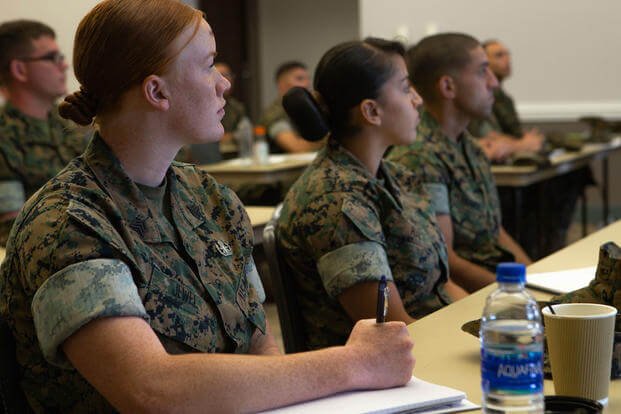The Transition Assistance Program (TAP) provides information, tools and training to help service members and their spouses get ready to successfully move from the military to civilian life.
From start to finish, TAP guides users on veteran benefits, education options, federal assistance and veteran employment help.
The TAP process, once known as Transition GPS (Goals, Plans, Success), is broken down into five parts over a minimum 12-month timeline, although those getting ready to retire can start as far as 24 months out.
1. Initial counseling. Required in most cases no less than 365 days prior to the service member's official separation date, the initial counseling is a one-on-one session with a transition counselor either in-person or by video conference. This session is meant to help you not only know what to expect from the TAP process, but build a plan for getting the most out of the program. Learn more about the initial counseling appointment.
2. Pre-separation briefing. Like the initial counseling, TAP's pre-separation briefing is also in most cases due no less than a year before you plan to officially leave the military. Also known as "transition counseling," this session is a class packed with information about available benefits and transition help. Learn more about the pre-separation briefing.
3. DoD Transition Day, VA briefing and Department of Labor help. Think of the Defense Department's Transition Day as a lesson in understanding how to shift your life from being centered on the military to being focused on the civilian world. This day of classes focuses on resilience building, learning how to manage your own transition, translating your military occupational specialty into a civilian career, and more financial literacy help. The Department of Veterans Affairs' briefing day and the day spent hearing from the Department of Labor are both designed to give you a thorough picture into help available from those agencies. While DoD Transition Day and the VA briefing are mandatory, the Department of Labor class is optional if you are retiring after 20 years, are going to school after you transition, or can certify that you already have a post-service job lined up. Learn more about these briefing days.
4. Specialized transition assistance program career tracks. Since no service member's transition is exactly the same, TAP offers a series of two-day, individual tracks designed to help troops with their individual goals. Those tracks are: the DOL employment track, the DOL vocational track, the DoD education track and a track focused on starting a small business. Troops must select at least one of these tracks, but can also choose to attend more than one. Learn more about the specialized workshops.
5. TAP Capstone. After you've gone through the TAP courses and briefing days, a final TAP capstone will certify that you have checked all of your transition boxes and met the Pentagon's list of career readiness standards (CRS). The capstone is the final piece of your TAP puzzle and, in most cases, must be completed no less than 90 days before your final out date. Learn more about the TAP capstone.
You can see your individual service's transition program here:
- Army: Soldier for Life -- Transition Assistance Program
- Air Force; Transition Assistance Program
- Navy: Transition Goals, Plans, Success
- Marine Corps: Transition Readiness Program
- Coast Guard Transition Assistance Program
Find the Right Veteran Job
Whether you want to polish your resume, find veteran job fairs in your area or connect with employers looking to hire veterans, Military.com can help. Subscribe to Military.com to have job postings, guides and advice, and more delivered directly to your inbox.











